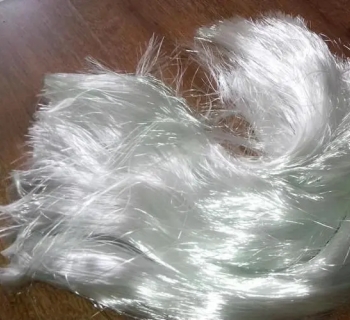Stearoyl trimethyl ammonium chloride is a cationic lotion containing 35% aminomethyl polysiloxane, which has many properties such as conditioning, softening, anti-static, sterilization, disinfection, and emulsification. It is widely used in shampoo, hair conditioners, styling products, and other fields to enhance hair smoothness and fluffiness. It is also used as an emulsifier, anti-static agent, and disinfectant in other fields. However, avoiding using it with anionic surfactants, dyes, or additives is important.
1. High adsorption: Stearyl trimethyl ammonium chloride has excellent adsorption performance, which enables it to play an important role in various applications.
2. Conditioning performance: As a cationic lotion containing 35% aminomethyl polysiloxane, stearyl trimethyl ammonium chloride has excellent conditioning performance, which can significantly improve the damaged hair quality and improve the dry and wet combing properties of hair.
3. Chemical stability: Stearyl trimethyl ammonium chloride has good chemical stability which can withstand heat, light, pressure, and strong alkalis and acids.
4. Excellent penetration, softening, anti-static, and bactericidal properties: This compound has excellent penetration, softening, anti-static, and bactericidal properties and can be well coordinated with various surfactants or additives, with significant synergistic effects.
1.Hair care products: Stearyl trimethyl ammonium chloride is widely used in shampoos, hair conditioners, baking creams, and styling products due to its excellent conditioning properties. It can effectively repair dyed and permed hair, improve hair damage, roughness, and dryness caused by chemical treatment, make hair smoother and easier to care for, and give hair a sense of wet combing, dry combing, and fluffiness.

Stearyl trimethyl ammonium chloride for hair care products
2.Emulsifier: Stearyl trimethyl ammonium chloride is also an excellent emulsifier widely used in synthesizing rubber, silicone oil, asphalt, and other oil and fat chemicals.

Stearyl trimethyl ammonium chloride used for the synthesis of oil and fat chemicals such as asphalt
3.Antistatic agent: In synthetic and glass fibers, stearoyl trimethyl ammonium chloride can be used as an antistatic agent to help prevent static accumulation.

Stearyl trimethyl ammonium chloride can be used as an antistatic agent in synthetic fibers and glass fibers
4. Fungicides and disinfectants: Stearyl trimethyl ammonium chloride also has bactericidal and disinfectant properties, so it is often used as a bactericide and disinfectant.

Company Profile
NANOTRUN(www.rboschco.com) is a trusted global chemical material supplier & manufacturer with over 12-year-experience in providing super high-quality chemicals and nanomaterials, including boride powder, nitride powder, graphite powder, sulfide powder, 3D printing powder, etc.
The company has a professional technical department and Quality Supervision Department, a well-equipped laboratory, and equipped with advanced testing equipment and after-sales customer service center.
If you are looking for high-quality Stearyl Trimethyl Ammonium Chloride , please feel free to contact us or click on the needed products to send an inquiry.
Payment Term
L/C, T/T, Western Union, Paypal, Credit Card etc.

Shipment Term
By sea, by air, by express, as customers request.
Q1
What is the specific mechanism behind the strong binding force between stearoyl trimethyl ammonium chloride and hair?
Re:The strong binding force between stearoyl trimethyl ammonium chloride and hair is mainly due to its cationic properties and the electrostatic interaction between the anionic groups on the hair. Hair is mainly composed of keratin and has a negative charge on its surface. When stearoyl trimethyl ammonium chloride is applied to hair, its positively charged group undergoes electrostatic attraction with the negatively charged group on the hair's surface, forming a strong binding force. This combination enhances the conditioning effect and effectively repairs damaged hair, improving its appearance and touch.
Q2
How can the anti-static performance of stearoyl trimethyl ammonium chloride improve the anti-static effect of fibers?
Re:The anti-static performance of stearoyl trimethyl ammonium chloride is mainly achieved through the electrostatic neutralization between its cationic group and the anionic group on the fiber. When fibers are positively charged and generate static electricity, the cation of stearyl trimethyl ammonium chloride can neutralize these positive charges, thereby reducing the accumulation and discharge of static electricity. In addition, stearoyl trimethyl ammonium chloride can also form a protective film on the surface of fibers, further reducing the generation of static electricity. Through this method, stearoyl trimethyl ammonium chloride can effectively improve the anti-static effect of fibers and reduce the damage and inconvenience caused by static electricity to fibers.
Q3
What is the bactericidal mechanism of stearoyl trimethyl ammonium chloride when used as a fungicide and disinfectant?
Re:When stearoyl trimethyl ammonium chloride is used as a bactericide and disinfectant, its bactericidal mechanism is mainly achieved by destroying the cell wall or membrane structure of microbial cells. When stearoyl trimethyl ammonium chloride comes into contact with microorganisms, its cationic group can interact with the anionic group on the microbial cell wall or membrane, destroying cell structure and leakage of cell contents. In addition, stearoyl trimethyl ammonium chloride can also interfere with the metabolic processes and enzyme systems of microorganisms, inhibiting their growth and reproduction. These effects together lead to the death of microorganisms, thereby achieving the effects of sterilization and disinfection.
Q4
Why should stearoyl trimethyl ammonium chloride not be mixed with anionic surfactants, dyes, or additives?
Re:The main reason why stearoyl trimethyl ammonium chloride should not be mixed with anionic surfactants, dyes, or additives is that their interactions may lead to performance degradation or adverse reactions. Stearyl trimethyl ammonium chloride is a cationic compound, while anionic surfactants carry negative charges. When mixed, charge neutralization occurs, resulting in the loss of the cationic properties of stearyl trimethyl ammonium chloride, which affects its conditioning, anti-static, and other properties. Similarly, anionic groups in dyes and additives may also interact with stearyl trimethyl ammonium chloride, leading to color changes, precipitation formation, or reduced performance. Therefore, to avoid these adverse reactions, stearoyl trimethyl ammonium chloride should be avoided from being used together with anionic surfactants, dyes, or additives.
Q5
What is the safety of stearoyl trimethyl ammonium chloride?
Re:The safety of stearoyl trimethylammonium chloride depends on its concentration and contact method. Stearoyl trimethyl ammonium chloride is relatively safe for the human body within an appropriate concentration range. However, high concentrations of stearoyl trimethyl ammonium chloride may irritate the skin and eyes, so correct operating methods should be followed to avoid prolonged contact and inhalation. In addition, caution should be exercised for specific populations such as pregnant women, children, etc., and doctors should be consulted when necessary. Regarding the environment, stearoyl trimethyl ammonium chloride may have a certain impact on aquatic organisms, so wastewater should be properly treated after use to reduce its impact on the environment. Overall, the safety of stearoyl trimethyl ammonium chloride requires attention to concentration control and appropriate protective measures during use.
Stearyl trimethyl ammonium chloride Properties | |
| Other Names | N/A |
| CAS No. | 112-03-8 |
| Compound Formula | [C18H37N+(CH3)3]Cl- |
| Molecular Weight | 348 |
| Appearance | NA |
| Melting Point | N/A |
| Boiling Point | N/A |
| Density | N/A |
| Solubility in H2O | N/A |
| Exact Mass | N/A |
Stearyl trimethyl ammonium chloride & Safety Information | |
| Signal Word | N/A |
| Hazard Statements | N/A |
| Hazard Codes | N/A |
| Risk Codes | N/A |
| Safety Statements | N/A |
| Transport Information | N/A |




